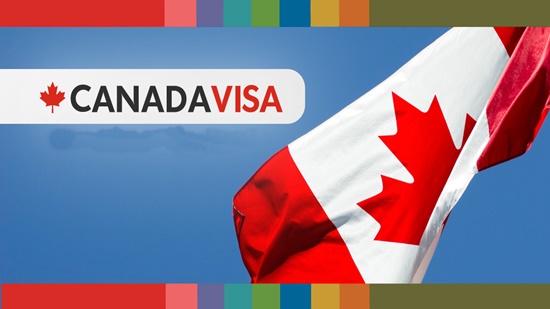Australia Visa Types
To travel to Australia, you must have a passport and a visa. But the question is what type of visa do you need to travel to Australia?
Different types of visa can get you to Australia but you must choose the one that serves your purpose of travelling.
So this article will explain the Australian visa types for you.
Sit back, relax and read through.
Types of Australia Visas
Check out the following types of Australian visas below;
Tourist Visa
If you want to give yourself a well-deserved vacation in Australia, then you need a tourist visa. Meanwhile, you should know that there are 2 types of tourist visas which are; the Visitor Visa subclass 600, and the e-Visitor Visa subclass 651.
Requesting any of these visas will depend on your nationality, but we will see that in more detail below;
- Visitor Visa (Subclass 600)
With a Visitor Visa (subclass 600), you can travel to Australia for a period of 3, 6 or 12 months as allowed by the immigration agent.
In this period, you can visit friends and family in Australia, or get to know the best Aussie attractions.
Also, this visa authorizes you to study for no more than 3 months. This comes in handy if you want to learn English in the country.
- E-Visitor Visa (Subclass 651)
An e-Visitor Visa (subclass 651) is the same as the Visitor 600. However, there are a few differences between the two.
For example, you can only apply for an e-visitor visa if you are a citizen of the European Union or one of the countries eligible for this type of visa.
As in the previous case, the visa lasts for 1 year, but you cannot stay in Australia for more than 3 months.
During your stay, of course, you can go on vacation at your leisure and enjoy the best Australian beaches, the typical gastronomy and everything you can think of.
However, you also have the authorization to study for a maximum of 3 months. Thus, you can take advantage of your stay in this country to learn English or something else.
Student Visa (Subclass 500)
Although, with a tourist visa to travel to Australia you can study, with a student visa (subclass 500) you have more benefits. For example, you can work 20 hours a week! As a tourist, it is not possible to study and work in Australia at the same time.
Besides, you can take courses lasting more than 3 months.
Work and Holiday Visa (Subclass 462)
If you want to study and work in Australia, you can also apply for a Work and Holiday Visa (subclass 462).
Maybe you think that this visa is the same as the student visa (subclass 500).
No, with a Work and Holiday Visa, you can work unlimited hours and live in Australia for only 1 year. However, you can request an extension.
On the other hand, if you want to study in Australia, you can take a course that does not last more than 4 months.
For the rest of your stay, you have two options. First, work full time, but keep in mind that, every 6 months, you must change employers.
The second is to go on vacation throughout the country. It’s your choice!
To obtain the Work and Holiday Visa, you must make your application in a set period. Generally, the call begins on July 1 of the current year and ends on June 30 of the following year.
Also, you must be a citizen of one of the countries eligible for the Work and Holiday Visa Australia.
For example, Spanish, Uruguayan, Argentine and Chilean citizens can request it while in other Spanish-speaking countries such as Venezuela, it is not available.
There is also a limited number of visas are granted per year.
Working Holiday Visa (subclass 417)
The Working Holiday Visa and the Work and Holiday Visa (note the difference) allow you to do the same. However, the application processes are different.
The Work Holiday Visa (subclass 417) has unlimited places and you can apply for it any day of the year. Also, it is usually rejected or approved within a maximum period of 5 days.
The requirements to obtain a Working Holiday Visa (subclass 417) are practically the same as for a Work and Holiday Visa. Even the cost is the same.
What you should keep in mind is that your passport must be valid for 1 year from the moment you arrive in Australian lands.
Besides, you do not have to certify your level of English or have university studies. It means that you can study English in Australia and work at the same time.
Without a doubt, it is a great opportunity to take advantage of your days in the country.
Yes! It seems like a dream come true, but nothing is perfect.
The Working Holiday Visa is only available for some European citizens, South America and other eligible countries. You can apply for the Working Holiday Visa 417 if you have a passport from any of these eligible countries.
Temporary Graduate Visa (Subclass 485)
If you have just finished your studies and want to work full time in Australia, you can apply for a visa to extend your stay. Its name is a Temporary Graduate visa (subclass 485). It depends on the degree you have obtained in Australia.
You can apply for a Graduate Work Stream or a Post-Study Work Stream.
Both visas have a cost of AUD 1650. However, there are a few small differences.
The Graduate Work Stream allows you to work in Australia for 18 months. Also, you can apply if you have a degree in a high demand career. The approval or denial usually takes 4 months, so you must apply for it while your current visa is valid.
If you obtained a post-study degree from an Australian university, you can apply for a Post-Study Work Stream.
With this visa, you can work from 2 to 4 years depending on the qualification you obtain. Likewise, approval or denial usually takes 4 months and you must have a valid visa at the time of application.
Temporary Skill Shortage List
The Temporary Skill Shortage List is a visa to work in Australia that you can obtain if you are a qualified professional.
With a bachelor’s degree in one of Australia’s demanded careers and work experience of more than 2 years, in your area of study, you are a suitable candidate.
However, it is an Australian employer who is applying as they have a valid job offer for you. It is very important that you speak English fluently and that your health is optimal at the time of application.
This visa is very attractive as it allows you to work in Australia for 2 to 4 years depending on the career you specialized in.
Partner Visa
If you want to travel to Australia with your partner, you can!
However, to apply for this visa, you must take into account a few things;
The application for this visa can be done if, and only if, you are going to live in Australia with a student visa or a Temporary Skill Shortage List.
Besides, you must present one of these documents below;
- Marriage or common-law certificate.
- Submit a joint bank statement.
- Attach a rental contract that includes the name of both or a similar document.
However, you must certify that you and your partner have been together for at least 1 year. Otherwise, it will be invalid.
Once the visa is approved, both of you will be able to travel to Australia to study and work.
For example, if you take a vocational course, your partner is allowed to work 20 hours a week.
Plus, you can study! Of course, only for a maximum period of 12 weeks.
However, if you are pursuing a master’s or another graduate study, he or she has the right to work full time!
Conclusion
I believe that we have been able to cover the types of Australian visas you need to know. Therefore, you can choose the one that suits you the most.
Ensure that you share this article with your colleagues online who might also be interested in knowing these types of Australia visa. Thanks.








